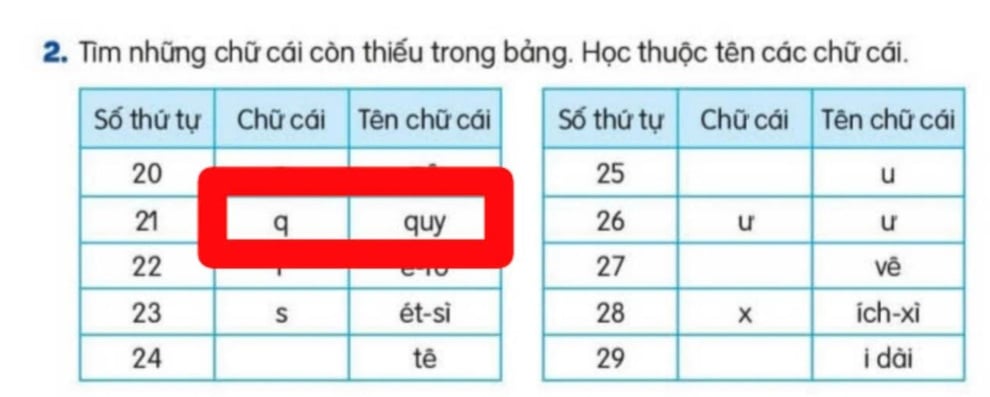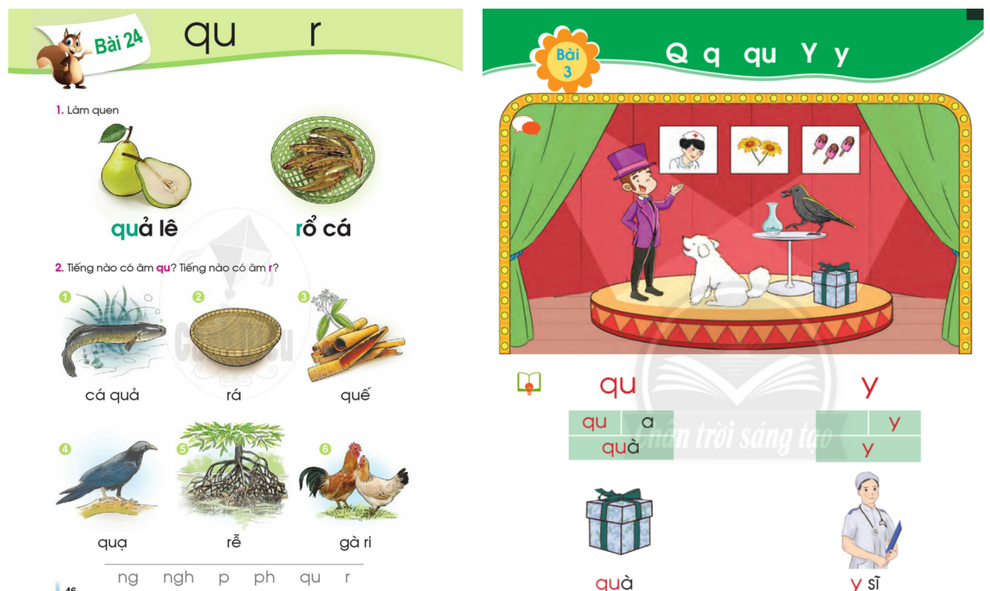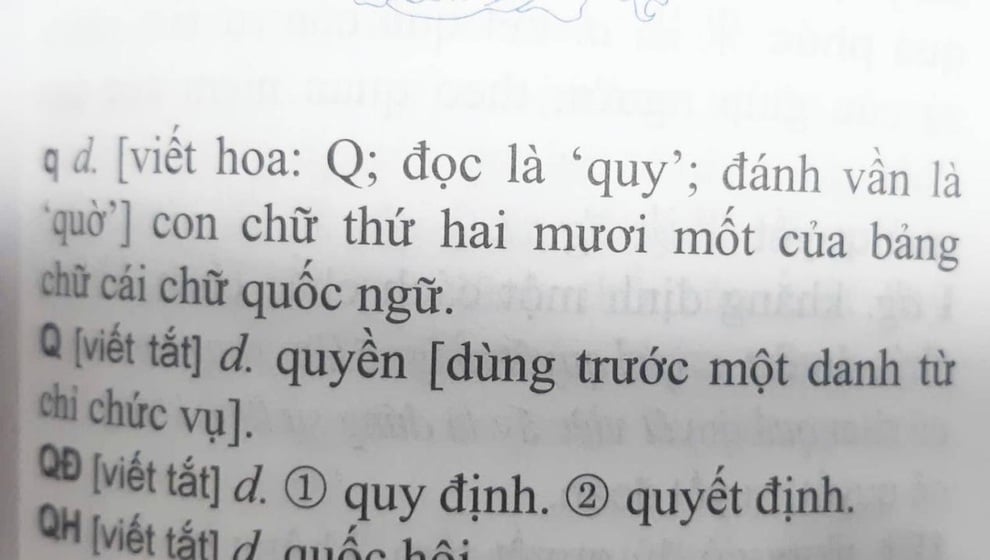On a forum for parents, the story about teaching children how to spell continues to attract attention. According to this person, in first grade, when studying the Canh Dieu book series, the teacher instructed her child to pronounce the letter "q" as /cu/.
However, in grade 2, when my child studied the book series Connecting Knowledge with Life, the letter "q" was taught to be read as /quy/. This confused students and parents, not knowing how to pronounce it correctly.
"This inconsistency makes parents confused when teaching their children at home," this parent shared.

Not only this mother, but in the comment section, dozens of parents have many opinions with conflicting arguments. Some opinions even say that another way to read the letter "q" is /quờ/.
Teacher Dao Thu Thuy - a primary school teacher in Hanoi - guides students to pronounce the letter "q" as /cu/. However, she further explains that the "q" sound is just a letter in the alphabet. In Vietnamese, the "q" sound does not stand alone but needs to be combined with the "u" sound to form the "qu" sound, pronounced as /quờ/, which can then be combined with other sounds and tones.
According to the research of Dan Tri reporter, in the Vietnamese Dictionary of the Institute of Linguistics (2010), the letter "q" (the 21st letter of the national alphabet) is read as /cu/.
Meanwhile, the latest Vietnamese Dictionary of the Center for Lexicography, edited by Hoang Phe (2020), the letter "q" is instructed to be read as /quy/.
Explaining these different ways of reading, Master of Literature Nguyen Huong - teaching in Thai Nguyen - said that recently, there have been some changes in the pronunciation of the three letters "c", "k" and "q".
In which, the letter "q" has two pronunciations: /quy/ or /cu/. In books, students will be taught that the letter "q" always goes with the letter "u" and is pronounced /quờ/.
For example, the word "fruit" is spelled /quờ - a - qua - hỏi - quả/ or /cu - a - coa - hỏi - quả/.

"Previously, at this age, parents often pronounced the letter "k" as /ca/, and the letter "q" as /quy/. However, recently, the pronunciation of those two letters has changed to /cờ/ and /cu/ respectively. However, the pronunciation as /ca/ and /quy/ is not wrong, due to the consistency of each set of books and each teacher," shared Master Nguyen Huong.
Associate Professor Dr. Pham Van Tinh - former General Secretary of the Vietnam Linguistics Association, currently Director of the Vietnam Studies Center - said that in the national language, the phoneme /k/ is represented by three letters "c", "k" and "q".
According to Mr. Tinh, in terms of linguistic science and pedagogical science, both ways of spelling the letter "q" as /cu/ or /quy/ are aimed at the basic goal of primary school, which is to "recognize" letters accurately in order to read and write fluently.
"Some letters will be pronounced in many ways, there is no definitive standard for how they should be pronounced. Therefore, schools and localities choose which materials will teach students to spell according to the way that material instructs," Associate Professor Dr. Pham Van Tinh expressed.

Vietnamese Dictionary of the Center for Lexicography, edited by Hoang Phe (2020), the letter "q" is instructed to be read as /quy/ (Photo: Associate Professor, Dr. Pham Van Tinh).
He cited some words that can be read in many ways, such as: the letter "c" can be read as "xe" or "co"; the letter "m" can be read as /mo/ or /em mo/; the letter "n" can also be read as /nờ/ or /en nờ/...
However, Mr. Tinh emphasized that teachers need to explain these questions to students and parents to avoid confusion and controversy.
According to the expert, no matter which method is chosen, it will not affect the students' future learning and use of Vietnamese because in reality, this pronunciation only stops at the initial stage when they start learning to read.
Source: https://dantri.com.vn/giao-duc/phu-huynh-roi-nao-ve-phat-am-tieng-viet-moi-giao-vien-day-mot-kieu-20240927133223406.htm




































































































Comment (0)